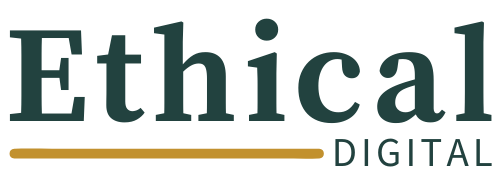Measuring Social Anxiety In Social Media Users
Why is this important, and how do we do it?
Social anxiety is something we discuss in tandem with social media quite often these days. And how could we not? Social media, at its best, is a place to share and bond and keep in touch; at its worst, it’s home to comparison, intimidating interactions, and judgement.
But when it comes to social anxiety from social media, how do we measure it? Well, a team of researchers set out to answer this question, developing a scale of social anxiety particular to social media use.
What is Social Anxiety?
According to the researchers, social anxiety can be defined as “a type of anxiety-related problem resulting from when people are fearful or anxious when interacting with or being negatively evaluated and scrutinized by other people during social interactions in a social setting.” Basically, it’s the version of anxiety affected by and affecting social interaction.
According to the Mental Health Foundation, the average age of onset of Social Anxiety Disorder is between ages 10 and 13, and it is rarely diagnosed after 25 years old. Social anxiety affects men and women roughly equally.
How Does Social Media Affect Social Anxiety?
As we’ve covered in the past, how you use social media will determine how it affects you. For example, research has found that if you use social media for communication and social interaction, it can be quite good for you! However, if you’re using it in more passive ways (i.e. surfing, scrolling) you’re more likely to experience symptoms of depression, anxiety, and burnout.
This research also raised the concern of privacy. Social media allows—and indeed encourages—you to share your personal details. In a study of adolescents using Facebook, it found that teens who were concerned about their privacy on social media may also be those who were socially anxious. However, this study also found that participants who were more concerned about their privacy were less likely to share many personal details online—keeping them safer from the very thing they fear.
How Can We Measure Social Anxiety?
Many scales for measuring general social anxiety exist, but none that are linked to social media use.
Thus, the Social Anxiety Scale for Social Media Users (SAS-SMU) was created. The scale is divided into four sections:
Shared Content Anxiety (SCA): the social anxiety that arises from sharing content or having content shared about you.
Privacy Concern Anxiety (PCA): the social anxiety of sharing too much information online.
Interaction Anxiety (IA): the social anxiety felt when interacting with people online, especially people you’ve just met.
Self-Evaluation Anxiety (SEA): how one evaluates oneself based on how they think others are evaluating them online.
From these four dimensions, twenty-one questions for the scale were created. Seven questions were developed pertaining to Shared Content Anxiety, five questions for Privacy Concern Anxiety, six for Interaction Anxiety, and three for Self-Evaluation Anxiety.
For example, one prompt within the Shared Content Anxiety category was: “I am concerned about being ridiculed by others for the content I have shared.”
The measurements were developed through an examination of the current literature, then through the data collection of participant groups in two phases. The researchers collected data on each participant’s demographics and social media use in phase one. Phase two was used to validate the conclusions of phase one.
Why Do We Need To Measure Social Anxiety for Social Media Users?
Social media is everywhere. It’s become second nature to scroll in leisure time, professional settings, and even educational environments. So, especially pertaining to education, we need to be able to measure how social media is affecting our sense of social comfort (or discomfort). If used properly, this scale can be used to tailor learning environments that make use of social media in the most beneficial way.
This study was just a first step in addressing the complicated effects of social media on our sociality. Further research must be prioritized to understand how it’s affecting different demographics.
For now, we can conclude that social media and social anxiety are entangled concepts. It’s rather common to be worried about how you present yourself online. Should I post this picture or that one? Is it embarrassing to comment on that? That person didn’t like my post—what does it mean? We’re all susceptible to this game of assumptions.
There are a few steps you can take to keep social media feeding connections and not stressing you out and feeding your anxieties.
Try:
Surrounding yourself with an online community that brings you joy and comfort.
Setting boundaries with your online presence that keep you safe from privacy concerns. Save the personal details for those in-person connections.
If all else fails, cut down on your social media use. Easier said than done, but this can only help protect you from the potential anxieties of online interaction. Plus, it frees up extra time for reading, exercise, cooking nourishing food, schoolwork, hobbies—you name it!
Study Objectives & Methods
Development and Validation of Social Anxiety Scale for Social Media Users.
Yunus Alkis, PhD; Zafer Kadirhan, GS; Mustafa Sat, PhD Candidate.
Published in Computers in Human Behaviour, 2017.
In this study, Alkis, Kadirhan, and Sat set out to develop a social anxiety scale for social media users. In order to do this, they drew upon previous research on social anxiety and gathered data from two phases of participants. Phase one included 174 college students, each filling out a questionnaire about their demographics and social media use. Questions for the scale were developed from these elements and tested in phase two on 510 participants.
Social Media and Well-Being Training
This research (and all our social media and well-being articles) have laid the foundation for our 3-course program designed for anyone wanting to approach social media and communications in a way that protects well-being and puts people first. Learn more here.



